We debarked the bus a couple of blocks away, where we were gently swarmed by vendors (the Jade Buddha Temple is a big tourist trap whoops, I mean tourist destination) and walked over toward the temple entrance:
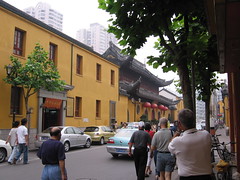
The building with the pointy curved bits is our goal!
On entering the Temple, we found ourselves in a courtyard filled with Buddhist worshippers and other tour groups.
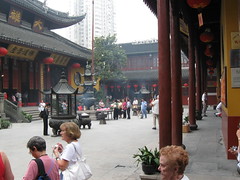
The courtyard furnishings include large incense burners and some tables, and there is a shop on one side where you can buy incense and candles in the shape of lotus flowers:
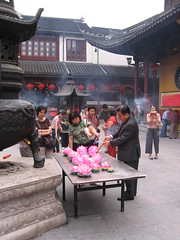
People will buy a whole box of incense, light it all off in a bunch, wave it during their prayers, and put the lot into one of these huge braziers. Some people use their incense as a giant-size match to light their lotus candles. Tom paused in the courtyard to give us a talk on Chinese Buddhism of which I didn't catch much what with his soft little voice and the general noise level.
The temple is kind of a maze of interconnecting courtyards, halls and corridors. The main wall color is saffron yellow - it's the color the monks wear as well

and there are a lot of traditional Chinese architectural touches like moon doors:
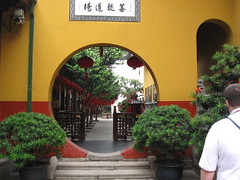
and round windows (I love this one with the dragon):
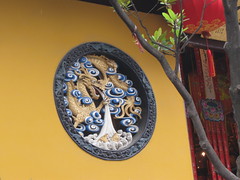
Across the courtyard we entered a hall housing the Three Golden Buddhas:
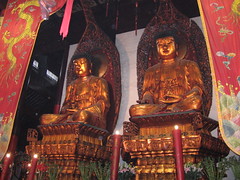
as well as statues of the Gods of the Twenty Heavens

and, around the back, Guanyin the Chinese goddess of mercy:
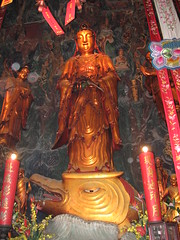
The artwork in this temple strikes me as very Indian in style.
The next "layer" of the temple - think of it as a big Buddhist onion - was a small courtyard whose incense burners, railings, trees, and anything else that won't walk away are festooned with red ribbons of fabric:

These represent prayers for luck or good fortune or help in distress. From this courtyard we entered a door leading to a spiral staircase to the second floor. We then crossed through the room where the Jade Buddha statue is kept. We weren't permitted to take photographs here, but in 2005, "Steve" was able to. There is a railing separating our path from the dimly lit "sanctuary" where the statue sits under an awning; you can pay a small fee to buy lamp oil which the attendant will add to the votive lamp.
On the other side, this window gives a great vantage of the roofs of yet another inner courtyard:
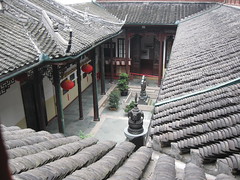
This twelve-foot recumbent Buddha adorns the gift shop, of all places!
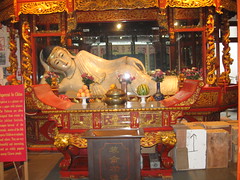
Someone mentioned that this temple has a koi pond, and I decided to find it. I passed down a long cloistered walkway
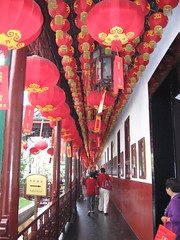
and popped out the back of the temple to the parking garage. This photo:
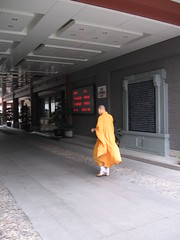
should be captioned, "Can you hear me now?" because this monk is on his cell phone!
Around the corner I located the koi, who seemed very pleased to see a human: "Maybe she has food!" The longer I stood there, the more of them there were!
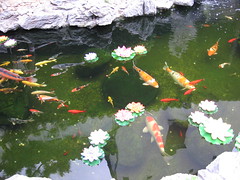
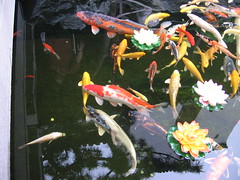

No comments:
Post a Comment